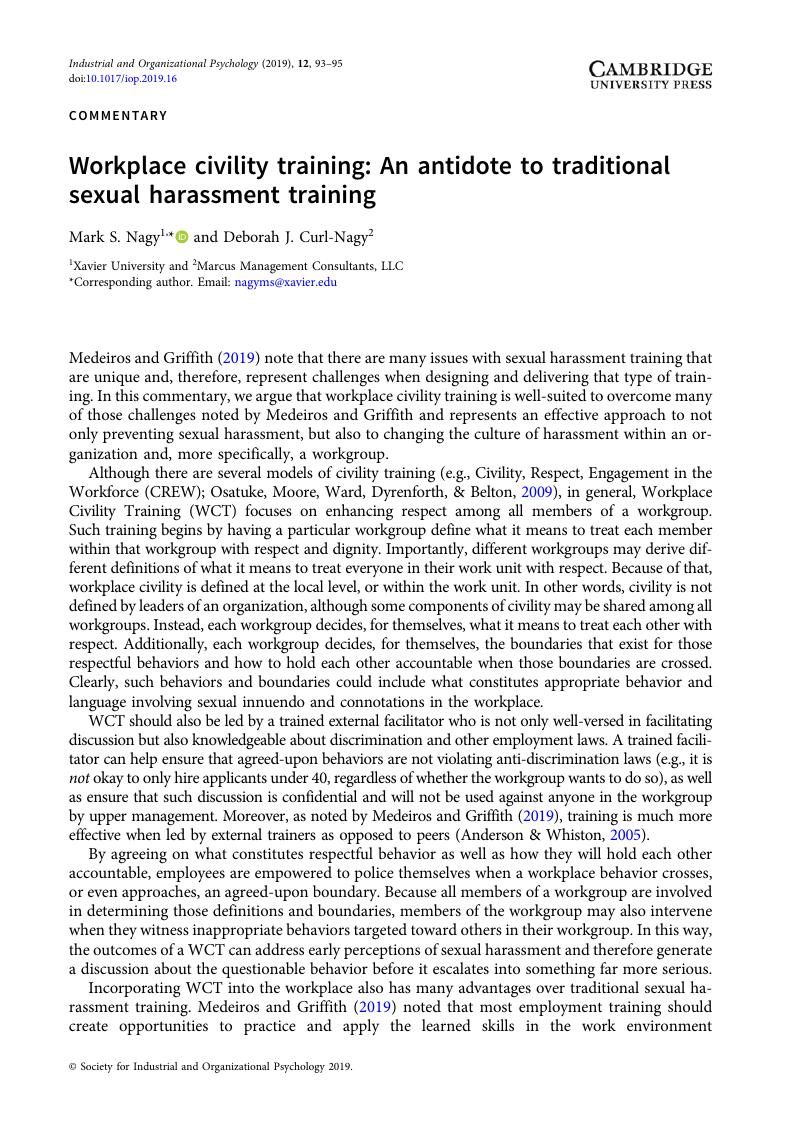Crossref Citations
This article has been cited by the following publications. This list is generated based on data provided by Crossref.
Mainiero, Lisa
2020.
Workplace romance versus sexual harassment: a call to action regarding sexual hubris and sexploitation in the #MeToo era.
Gender in Management: An International Journal
,
Vol. 35,
Issue. 4,
p.
329.
Tinkler, Justine E
and
Zhao, Jun
2020.
The Sexual Harassment of Federal Employees: Gender, Leadership Status, and Organizational Tolerance for Abuses of Power.
Journal of Public Administration Research and Theory,
Vol. 30,
Issue. 3,
p.
349.
Roehling, Mark V.
Wu, Dongyuan
Choi, Mahl Geum
and
Dulebohn, James H.
2022.
The effects of sexual harassment training on proximal and transfer training outcomes: A meta‐analytic investigation.
Personnel Psychology,
Vol. 75,
Issue. 1,
p.
3.
Stanley, Matthew L.
and
Kay, Aaron C.
2024.
Dissociations between animalistic and mechanistic dehumanization in the context of labor exploitation.
Journal of Experimental Social Psychology,
Vol. 115,
Issue. ,
p.
104665.
Cronin, Melissa R.
Zavaleta, Erika S.
Beltran, Roxanne S.
Esparza, Melanie
Payne, Allison R.
Termini, Valerie
Thompson, Joseph
and
Jones, Megan S.
2024.
Testing the effectiveness of interactive training on sexual harassment and assault in field science.
Scientific Reports,
Vol. 14,
Issue. 1,



